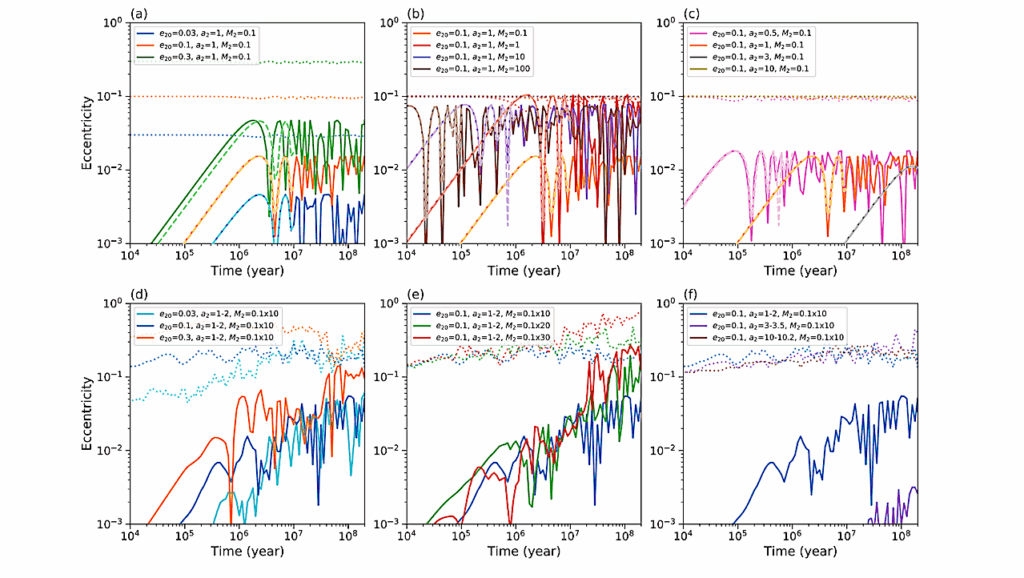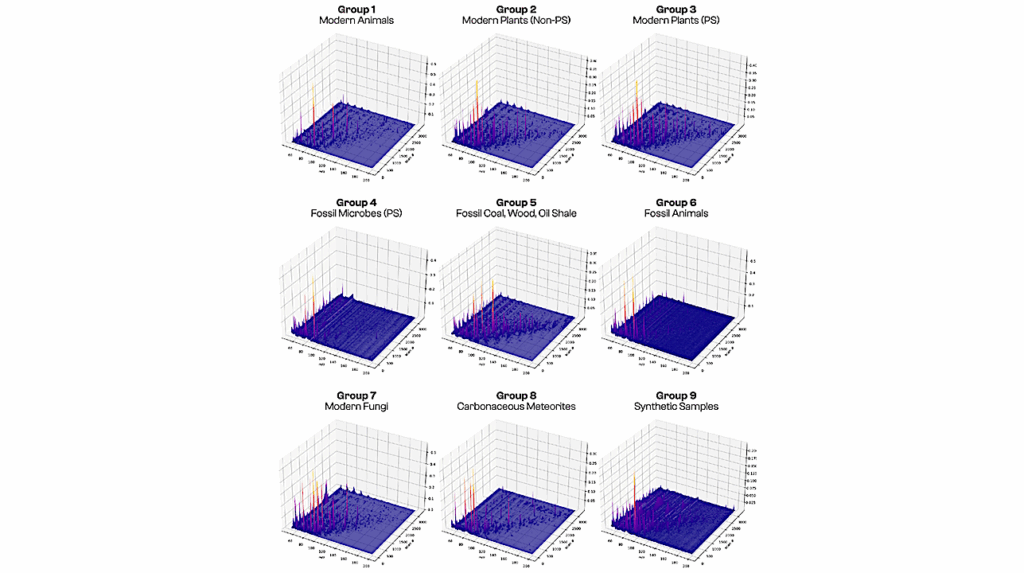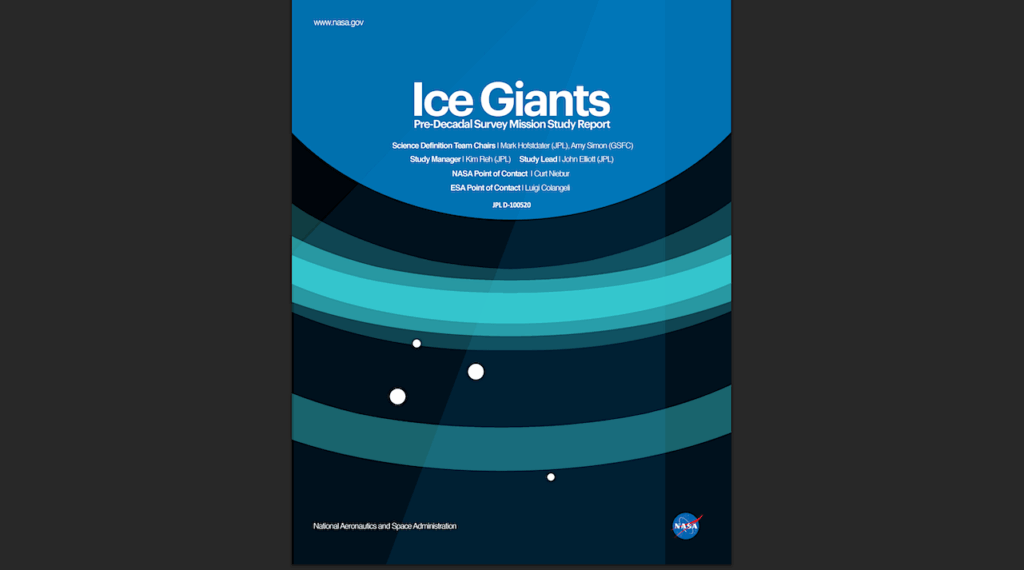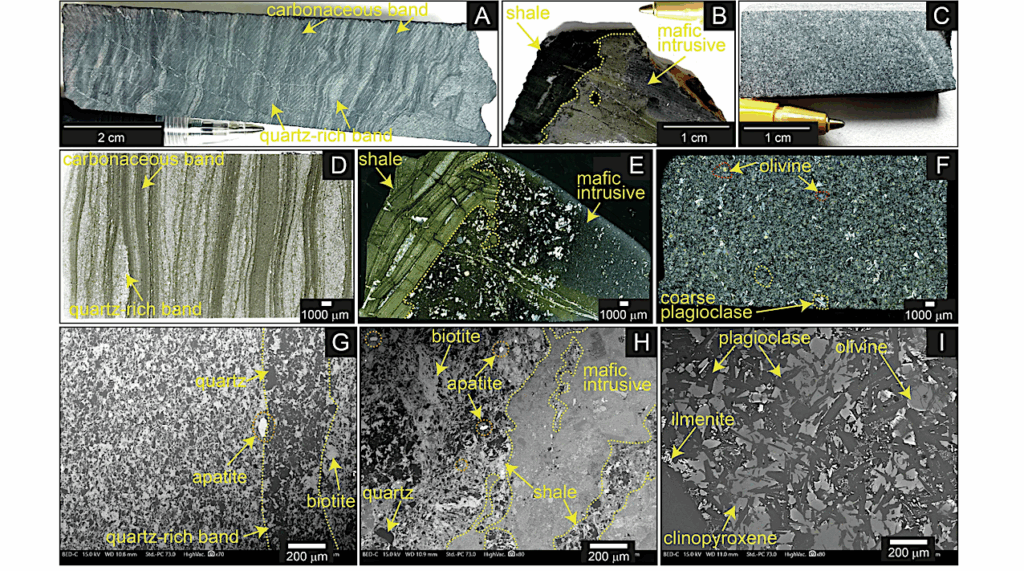Planet Mass Function Around M Stars At 1-10 au: A Plethora Of Sub-Earth Mass Objects

Small planets (≲1 M⊕) at intermediate orbital distances (∼1 au) represent an uncharted territory in exoplanetary science. The upcoming microlensing survey by the Nancy Grace Roman Space Telescope will be sensitive to objects as light as Ganymede and unveil the small planet population at 1−10 au.
Instrumental sensitivity to such planets is low and the number of objects we will discover is strongly dependent on the underlying planet mass function. In this work, we provide a physically motivated planet mass function by combining the efficiency of planet formation by pebble accretion with the observed disk mass function.
Because the disk mass function for M dwarfs (0.4−0.6M⊙) is bottom heavy, the initial planet mass function is also expected to be bottom-heavy, skewing towards Ganymede and Mars mass objects, more so for heavier initial planetary seeds.
We follow the subsequent dynamical evolution of planetary systems over ∼100 Myr varying the initial eccentricity and orbital spacing. For initial planet separations of ≥3 local disk scale heights, we find that Ganymede and Mars mass planets do not grow significantly by mergers.
However, Earth-like planets undergo vigorous merging and turn into super-Earths, potentially creating a gap in the planet mass function at ∼1 M⊕. Our results demonstrate that the slope of the mass function and the location of the potential gap in the mass function can probe the initial architecture of multi-planet systems. We close by discussing implications on the expected difference between bound and free-floating planet mass functions.

Left panel: The amount of dust mass needed to grow planets (Mdust→Mp ) from 10−2.06M⊕ as a function of final planet mass Mp at a given orbital distance indicated by color. Right panel: The cumulative distribution function (CDF) of the observed disk dust mass Mdisk around stars of 0.4–0.6 M⊙ from Manara et al. (2023) scaled up by a factor of 3 to represent Class 0/I disks. The vertical lines indicate the dust mass needed to grow a planet seed to a given planet mass at 3 au for two different M0 values, where we choose 3 au to represent the orbital distance to which microlensing surveys are most sensitive (Gaudi 2012). The fraction of stars that can harbor planets in a given mass range is obtained by subtracting the disk mass CDF values corresponding to the planet mass bin edges. Both panels are for fiducial values of αt = 10−4 and vf = 1 m/s. — astro-ph.EP
Yayaati Chachan, Eve J. Lee
Comments: under review at ApJ
Subjects: Earth and Planetary Astrophysics (astro-ph.EP)
Cite as: arXiv:2409.18171 [astro-ph.EP] (or arXiv:2409.18171v1 [astro-ph.EP] for this version)
https://doi.org/10.48550/arXiv.2409.18171
Focus to learn more
Submission history
From: Yayaati Chachan
[v1] Thu, 26 Sep 2024 18:00:00 UTC (469 KB)
https://arxiv.org/abs/2409.18171
Astrobiology








